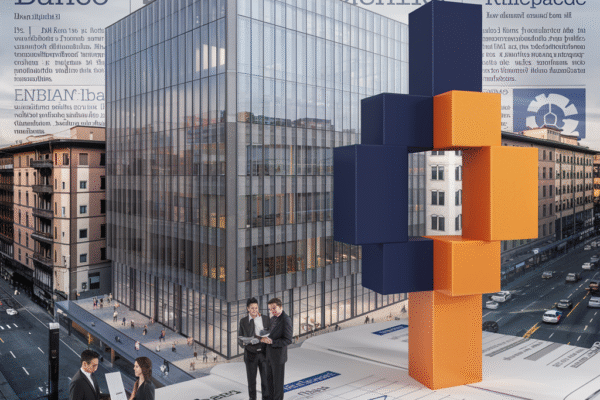As global markets grapple with tariff uncertainties and shifting monetary policies, Blackstone Inc. (NYSE: BX) has demonstrated remarkable resilience, reporting first-quarter distributable earnings of $1.09 per share on $3.29 billion in revenue – surpassing analyst expectations by 2.8% and 11.9% respectively[1][4][8]. The alternative asset management giant’s assets under management surged to $1.17 trillion, fueled by record-breaking $62 billion in quarterly inflows that underscore institutional investors’ flight to diversified alternative strategies[1][4]. While real estate headwinds persist, the firm’s credit and insurance division emerged as a powerhouse, driving 21% year-over-year AUM growth to $388.7 billion[4][7]. This performance comes as President Jonathan Gray warns of recession risks tied to prolonged trade policy uncertainty, positioning Blackstone’s $177 billion dry powder as both shield and spear in volatile markets[3][4].
Financial Fortitude in Turbulent Markets
Blackstone’s Q1 2025 results reveal an institution mastering complex market dynamics. Distributable earnings climbed 11% year-over-year to $1.41 billion, while fee-related earnings grew 9% to $1.26 billion – demonstrating the firm’s ability to monetize its sprawling investment platform[1][4][7]. The credit and insurance segment dominated capital flows, absorbing $30.3 billion in quarterly inflows as corporations increasingly bypass traditional lenders for Blackstone’s flexible financing solutions[4][7]. This growth helped offset a 6% decline in real estate AUM, where higher interest rates continue to pressure valuations[5][7].
Performance Across Business Segments
The firm’s private equity arm delivered $564.6 million in distributable earnings through strategic exits totaling $6.5 billion, while multi-asset strategies benefited from institutional demand for diversified exposure[4][7]. Blackstone’s perpetual capital vehicles now command $464.4 billion in AUM, providing stable fee income that rose 14% year-over-year[1][4]. This structural advantage becomes particularly valuable as market volatility compresses transaction activity across the industry.
Credit Dominance and Insurance Ambitions
Blackstone’s credit engine has become the firm’s growth catalyst, with $104.6 billion in trailing twelve-month inflows propelling the segment to nearly $389 billion in AUM[4][7]. The division now represents 33% of total firm assets, up from 28% in Q1 2024, reflecting both organic growth and strategic acquisitions in specialty finance sectors. President Jonathan Gray highlighted the segment’s “countercyclical strength” during the earnings call, noting increased demand for private credit solutions as regional banks retrench[8].
Building an Insurance Juggernaut
The firm’s insurance strategy continues gaining momentum, with premium float surpassing $150 billion through partnerships with major carriers[4]. This permanent capital source complements Blackstone’s credit expertise, creating what CFO Michael Chae described as “the virtuous cycle of our liability-driven investment platform”[8]. Analysts estimate the insurance vertical could contribute 25% of total fee-related earnings by 2026 if current growth trajectories persist.
Real Estate: Contrarian Bets Amid Sector Headwinds
While Blackstone’s core real estate funds face valuation pressures, the firm is deploying $8 billion in fresh capital to target distressed office assets in major global markets[5]. This contrarian strategy focuses on “last-building-standing” trophies in cities like Manhattan and London, where the firm believes hybrid work policies will ultimately concentrate demand in premium spaces[5]. The approach contrasts with challenges in its mortgage REIT (BXMT), where office loan exposures drove a 50% share price decline from pandemic peaks[5].
Strategic Pivots in Property Markets
Asset rotation remains central to Blackstone’s real estate playbook. The firm recently exited $12 billion in logistics properties at peak valuations while acquiring $3 billion in data center assets through joint ventures[4][8]. This shift toward digital infrastructure and life sciences real estate aims to capture structural demand drivers while reducing exposure to traditional office sectors.
Economic Storm Clouds and Strategic Positioning
President Jonathan Gray’s warning of recession risks tied to prolonged tariff uncertainty underscores Blackstone’s macroeconomic calculus[3]. The firm has increased hedging activity across its portfolios while maintaining liquidity buffers equivalent to 15% of AUM[8]. This cautious stance hasn’t prevented aggressive deployment – Blackstone committed $54 billion to new investments in Q1, with particular focus on European corporate carve-outs and Asian technology ventures[4][8].
Dry Powder as Strategic Weapon
With $177 billion in uncommitted capital, Blackstone is positioning to capitalize on dislocations across multiple asset classes. The firm recently acquired a $7 billion portfolio of non-performing loans from European banks and provided $2.5 billion in rescue financing to a struggling Asian conglomerate[4][8]. CEO Stephen Schwarzman emphasized that “market volatility creates our best vintage years,” drawing parallels to the firm’s crisis-era successes[1][4].
Leadership Vision and Investor Calculus
Schwarzman’s assertion that “scale begets scale” in alternative assets resonates through Blackstone’s results, with the firm capturing 22% of global private equity inflows in Q1[4][8]. This gravitational pull enables favorable terms on large transactions, exemplified by recent co-investment vehicles that offered limited partners reduced fees for $10 billion+ commitments. However, some analysts question whether Blackstone’s sheer size might constrain future returns, particularly in crowded sectors like infrastructure and technology buyouts.
Balancing Growth and Performance
The firm’s 15% year-to-date stock performance trails some smaller peers, reflecting investor concerns about maintaining historical return thresholds at $1 trillion+ AUM[2][7]. Blackstone addresses this through product innovation, recently launching sector-specific funds in space technology and carbon capture that charge premium fees for specialized expertise[8]. Early indicators suggest strong demand, with the climate fund securing $7 billion in soft commitments before its official launch.
Conclusion: The Alternative Ascent Continues
Blackstone’s Q1 performance validates its thesis that alternative assets will dominate 21st century portfolio construction. As pension funds and sovereign wealth funds target 30%+ allocations to privates (up from 18% in 2020), the firm’s diversified platform positions it to capture disproportionate flow share. While real estate transitions and macroeconomic risks persist, Blackstone’s $1.17 trillion fortress balance sheet and institutional client trust suggest the firm will continue rewriting the rules of global finance. The coming quarters will test whether scale and sophistication can overcome cyclical headwinds – a challenge this financial titan appears uniquely equipped to meet.
Sources
https://www.investing.com/news/earnings/blackstone-beats-expectations-with-strong-q1-earnings-and-revenue-93CH-3990464, https://www.investopedia.com/blackstone-stock-hits-record-high-as-assets-under-management-jump-8729721, https://www.benzinga.com/news/management/25/04/44871428/blackstone-president-warns-of-recession-risk-tied-to-trumps-tariffs, https://www.investing.com/news/company-news/blackstone-q1-2025-slides-aum-reaches-117-trillion-with-strong-inflows-93CH-3990439, https://www.thedailyupside.com/economics/real-estate/blackstone-has-hope-for-the-office-real-estate-market/, https://www.indexbox.io/blog/blackstones-profit-surges-amid-asset-sales/, https://www.devdiscourse.com/article/science-environment/3349592-blackstones-first-quarter-profits-soar-amid-market-turbulence, https://www.investing.com/news/transcripts/earnings-call-transcript-blackstone-q1-2025-beats-eps-and-revenue-forecasts-93CH-3991204





